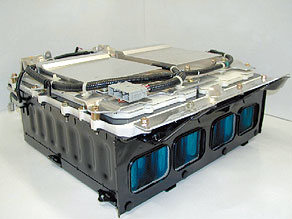 It won’t be long before ultracapacitors will become commercially available as a smaller, lighter and faster wireless charger for portable devices. Batteries have their own limitations such as being expensive, taking long time to charge and most of them are made from hazardous chemicals. Though the theory of the capacitor is nothing new it has not been put into commercial use for several reasons. One of the reasons is that it has a fairly big price tag and there is some issue in manufacturing as well. However it will soon come out of its limitation and then be used commercially all over the world.
It won’t be long before ultracapacitors will become commercially available as a smaller, lighter and faster wireless charger for portable devices. Batteries have their own limitations such as being expensive, taking long time to charge and most of them are made from hazardous chemicals. Though the theory of the capacitor is nothing new it has not been put into commercial use for several reasons. One of the reasons is that it has a fairly big price tag and there is some issue in manufacturing as well. However it will soon come out of its limitation and then be used commercially all over the world.
The capacitor looks like a typical battery but has different features. While a battery makes use of chemicals to create a charge the capacitor makes use of a solid electrode and electrolyte ions to create a positive charge. The capacitor can create and provide virtually unlimited amount of energy though its size is relatively small. It can also survive in lower temperatures unlike a battery. And after being charged and discharged many times the battery has to be disposed off at one point of time. The capacitor, on the other hand will power our mobile phones and even laptop computers wirelessly. It will not have to be disposed like a battery and hence it will prove to be a good example of going green and sustaining the environment.
 The electrode materials in the capacitor will provide maximum power despite the small size and there would be a housing material that will hold the electrolyte ions and the electrode. Today there are other storage device materials being explored such as coal and coconut shells. Scientists are conducting experiments on super capacitors and capacitors for powering large scale applications as well. Hence they could be used in organizations such as hospitals for uninterrupted power supply.
The electrode materials in the capacitor will provide maximum power despite the small size and there would be a housing material that will hold the electrolyte ions and the electrode. Today there are other storage device materials being explored such as coal and coconut shells. Scientists are conducting experiments on super capacitors and capacitors for powering large scale applications as well. Hence they could be used in organizations such as hospitals for uninterrupted power supply.

